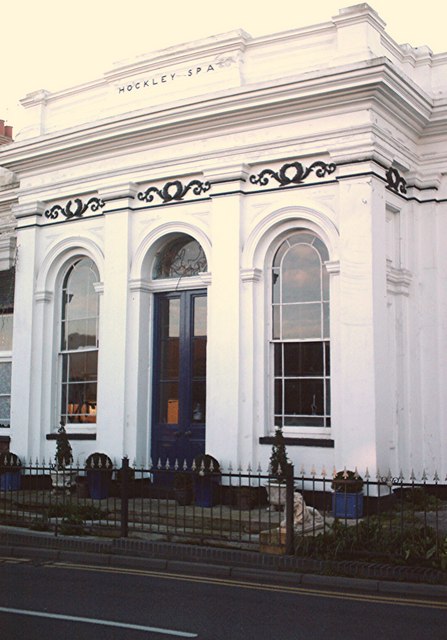James Lockyer (architect) on:
[Wikipedia]
[Google]
[Amazon]
 James Lockyer (1796 – 23 May 1875), sometimes styled as John Lockyer, was an English architect and surveyor, based in London. He worked mostly in the capital but also undertook work in the provinces.
James Lockyer (1796 – 23 May 1875), sometimes styled as John Lockyer, was an English architect and surveyor, based in London. He worked mostly in the capital but also undertook work in the provinces.
 James Lockyer (1796 – 23 May 1875), sometimes styled as John Lockyer, was an English architect and surveyor, based in London. He worked mostly in the capital but also undertook work in the provinces.
James Lockyer (1796 – 23 May 1875), sometimes styled as John Lockyer, was an English architect and surveyor, based in London. He worked mostly in the capital but also undertook work in the provinces.
Biography
Lockyer served his pupillage under Robert Abraham before forming his own office. Lockyer worked mostly in London where he designed buildings in Oxford Street and New Bond Street. Perhaps his best known work in the capital was theRoyal College of Chemistry
The Royal College of Chemistry: the laboratories. Lithograph
The Royal College of Chemistry (RCC) was a college originally based on Oxford Street in central London, England. It operated between 1845 and 1872.
The original building was designed ...
in Central London in 1846, long since demolished."The Late Mr James Lockyer", ''The Builder'', 19 June 1875, p. 544. His provincial work included the Spa Pump Room, including the nearby Spa Hotel, in Hockley, Essex. Both buildings survive, with the Pump Room being designated as a Grade II listed building
In the United Kingdom, a listed building or listed structure is one that has been placed on one of the four statutory lists maintained by Historic England in England, Historic Environment Scotland in Scotland, in Wales, and the Northern Irel ...
.
In 1852 Lockyer re-designed the facade of what is now the Grade I listed White's Club, in Westminster
Westminster is an area of Central London, part of the wider City of Westminster.
The area, which extends from the River Thames to Oxford Street, has many visitor attractions and historic landmarks, including the Palace of Westminster, Bu ...
, London. Two years later, he was instructed to carry out the design on Heal's
Heal's ("Heal and Son Ltd") is a British furniture retail company comprising seven stores, selling a range of furniture, lighting and home accessories. For over two centuries, it has been known for promoting modern design and employing ta ...
new property in Tottenham Court Road
Tottenham Court Road (occasionally abbreviated as TCR) is a major road in Central London, almost entirely within the London Borough of Camden.
The road runs from Euston Road in the north to St Giles Circus in the south; Tottenham Court Road tub ...
. The following year he rebuilt the facade of 10 Henrietta Street and then, in 1861, the neighbouring property at 9 Henrietta Street, both Grade II listed buildings.
Personal life
Lockyer married Anne Elizabeth Morant atSt George's, Hanover Square
St George's, Hanover Square, is an Anglican church, the parish church of Mayfair in the City of Westminster, central London, built in the early eighteenth century as part of a project to build fifty new churches around London (the Queen Anne C ...
, London, on 27 July 1822. Together they had two sons, James (b.1825) and Gilbert (b.1838). James became a successful coachbuilder
A coachbuilder or body-maker is someone who manufactures bodies for passenger-carrying vehicles.Construction has always been a skilled trade requiring a relatively lightweight product with sufficient strength. The manufacture of necessarily ...
, whilst Gilbert followed his father into the architectural profession.''England & Wales, National Probate Calendar (Index of Wills and Administrations) 1858-1966'', 1897 Index, p. 135.
Later years and death
Lockyer retired in around 1867 and left his practice to his son, Gilbert. Lockyer was living at 19Fitzroy Square
Fitzroy Square is a Georgian square in London. It is the only one in the central London area known as Fitzrovia.
The square is one of the area's main features, this once led to the surrounding district to be known as Fitzroy Square or Fitzro ...
, Fitzrovia
Fitzrovia () is a district of central London, England, near the West End. The eastern part of area is in the London Borough of Camden, and the western in the City of Westminster. It has its roots in the Manor of Tottenham Court, and was urban ...
, at the time of his death from paralysis
Paralysis (also known as plegia) is a loss of motor function in one or more muscles. Paralysis can also be accompanied by a loss of feeling (sensory loss) in the affected area if there is sensory damage. In the United States, roughly 1 in 50 ...
in 1875.
References
{{DEFAULTSORT:Lockyer, James (1796-1875) 1796 births 1875 deaths 19th-century English architects English ecclesiastical architects English surveyors Architects from London